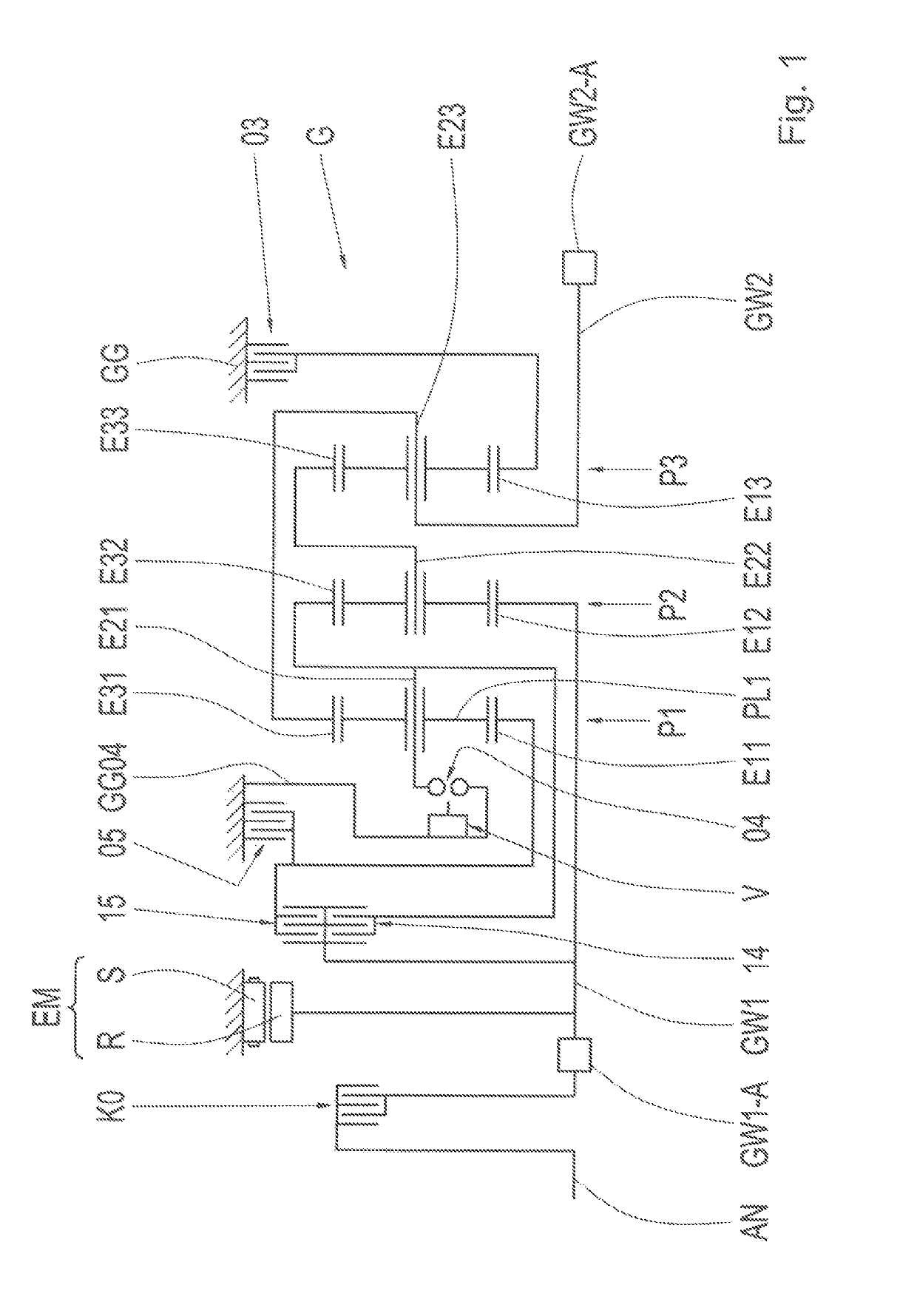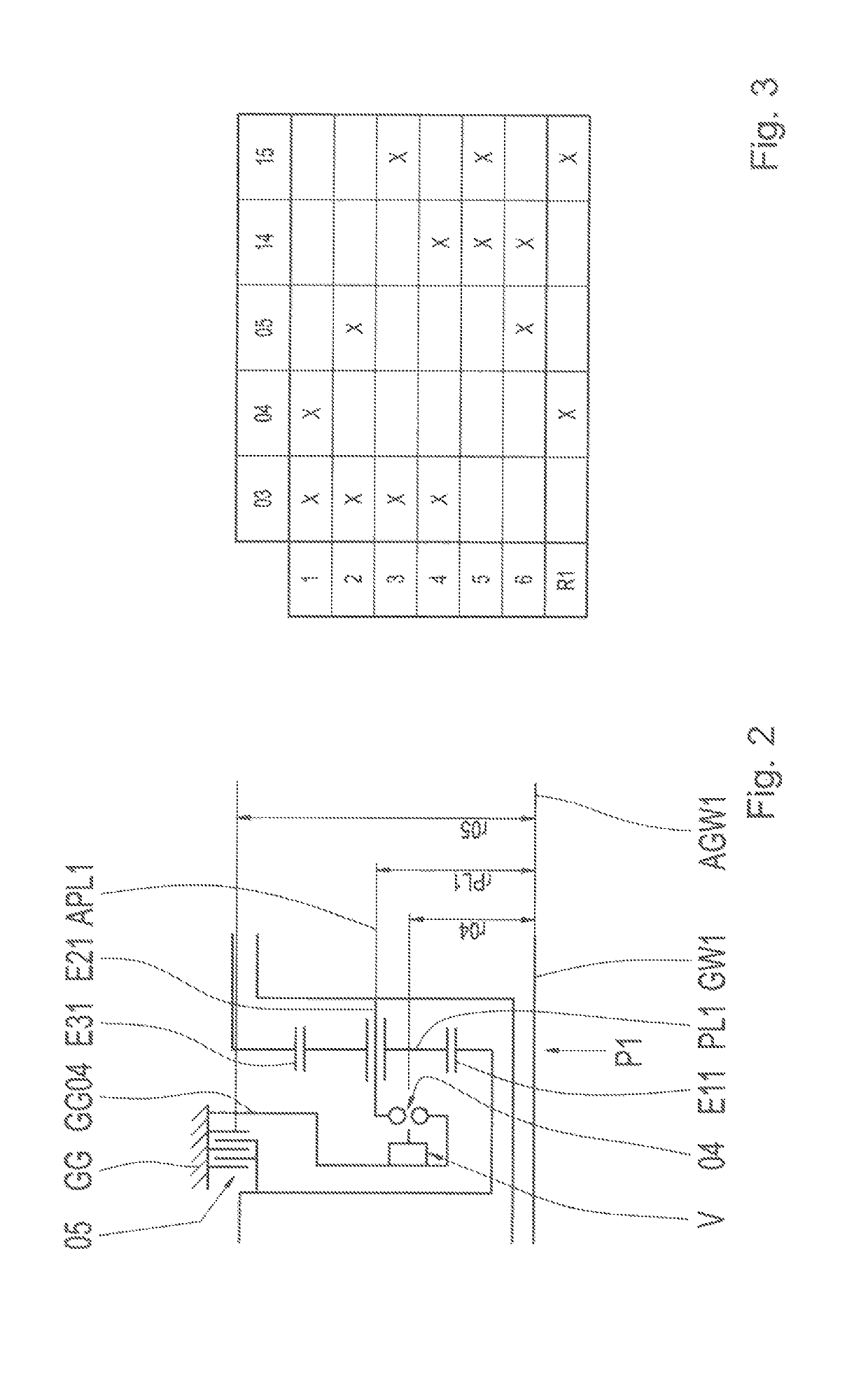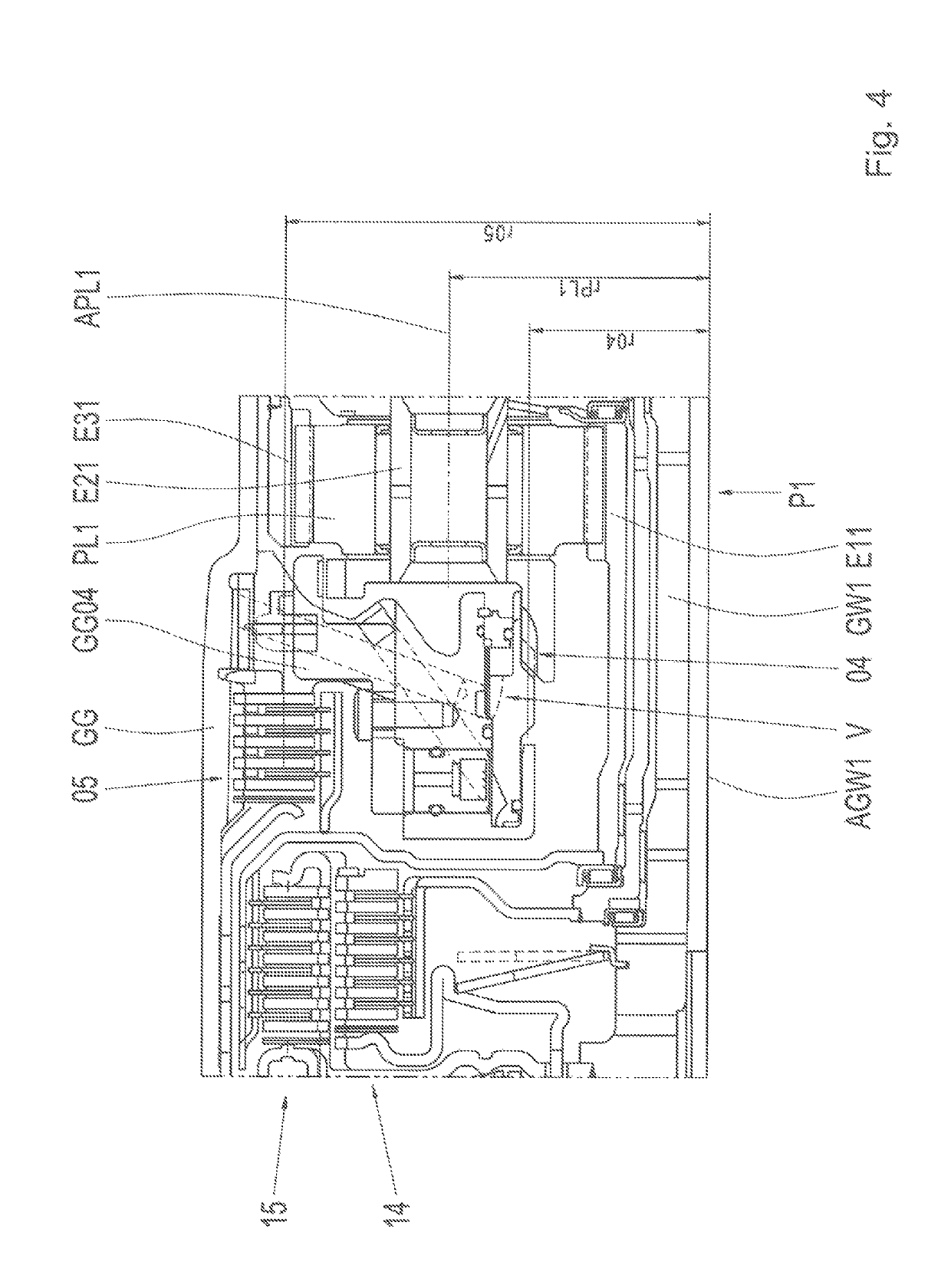Transmission for a hybrid vehicle, drive train for a hybrid vehicle having such a transmission, and method for starting up a hybrid vehicle
a technology for hybrid vehicles and transmissions, which is applied in the direction of mechanical equipment, transportation and packaging, and transmissions. it can solve the problems of increasing the axial structural length affecting the interior space of the hybrid vehicle, and limiting the structural space. it promotes the compact design of the transmission, promotes the short axial construction of the transmission, and promotes the effect of short axial structure length
- Summary
- Abstract
- Description
- Claims
- Application Information
AI Technical Summary
Benefits of technology
Problems solved by technology
Method used
Image
Examples
first embodiment
[0050]FIG. 4 shows a sectional illustration of a part of the transmission G as per a The first planetary gear set P1 is formed as a minus gear set, wherein a dog-clutch toothing is connected to the carrier of the first planetary gear set P1. Said dog-clutch toothing is a constituent part of the second shift element 04. The device V for actuating the second shift element 04, which device is formed as a hydraulic device, is fastened to the holding element GG04. A predominant part of said device V is arranged radially within the third shift element 05. The supply of hydraulic fluid to the device V runs in this case through ducts within the holding element GG04. The device V also has a means for detecting the position of the dog-clutch shift element 04, which means determine the axial position at that end of the displaceable element which is situated opposite the dog-clutch toothing.
second embodiment
[0051]FIG. 5 shows a sectional illustration of a part of the transmission G as per a The device V for actuating the second shift element 04, which device is formed as an electromagnetic device, is fastened to the holding element GG04. The electromagnet, illustrated by hatching, is designed such that, when electrically energized, it attracts an armature counter to a spring force, wherein the armature is fixedly connected to the axially displaceable element of the dog-clutch shift element 04. In the electrically deenergized state, the dog-clutch shift element 04 is opened by the spring force. The device V is arranged predominantly radially within the third shift element 05.
third embodiment
[0052]FIG. 6 shows a sectional illustration of a part of the transmission G as per a In this, the device V for actuating the second shift element 04 is formed as a hydraulic actuating device, which is designed to hydraulically close and hydraulically open the second shift element 04. Radially within the device V, the holding element GG04 has an abutment against which an axial bearing AL is supported. The axial bearing AL is formed as a rolling bearing and is designed to transmit forces acting in an axial direction from the first planetary gear set P1 to the holding element GG04. The first planetary gear set P1 is thus supported via the axial bearing AL on the holding element GG04 in the presence of a load acting towards the left in the figure. In the presence of a load acting towards the right in the figure, the first planetary gear set P1 is supported on a bearing arrangement on the transmission housing; this is not illustrated in FIG. 6. Radially within the device V, the holding ...
PUM
 Login to View More
Login to View More Abstract
Description
Claims
Application Information
 Login to View More
Login to View More - R&D
- Intellectual Property
- Life Sciences
- Materials
- Tech Scout
- Unparalleled Data Quality
- Higher Quality Content
- 60% Fewer Hallucinations
Browse by: Latest US Patents, China's latest patents, Technical Efficacy Thesaurus, Application Domain, Technology Topic, Popular Technical Reports.
© 2025 PatSnap. All rights reserved.Legal|Privacy policy|Modern Slavery Act Transparency Statement|Sitemap|About US| Contact US: help@patsnap.com



